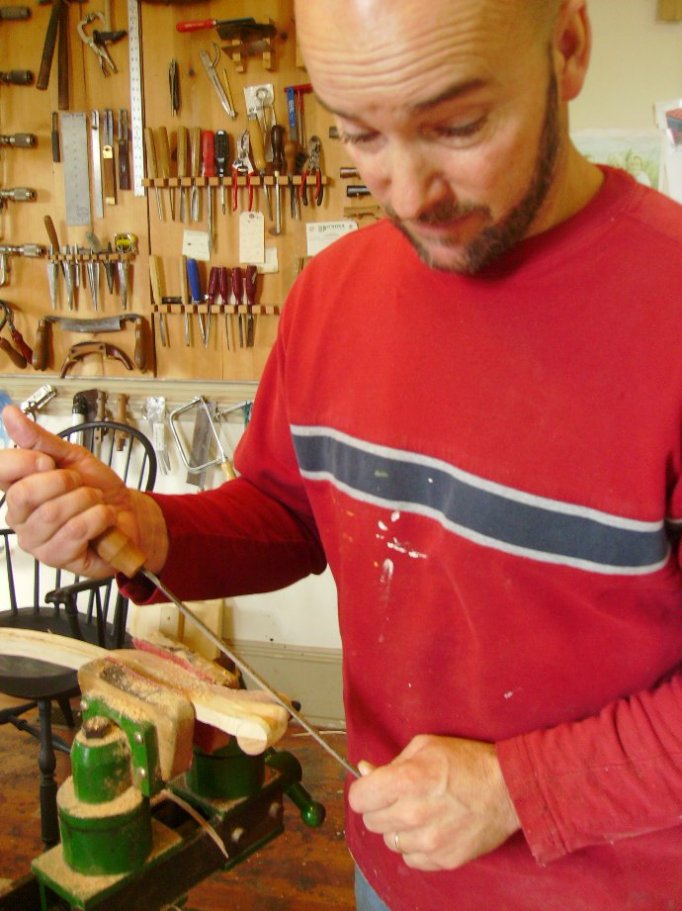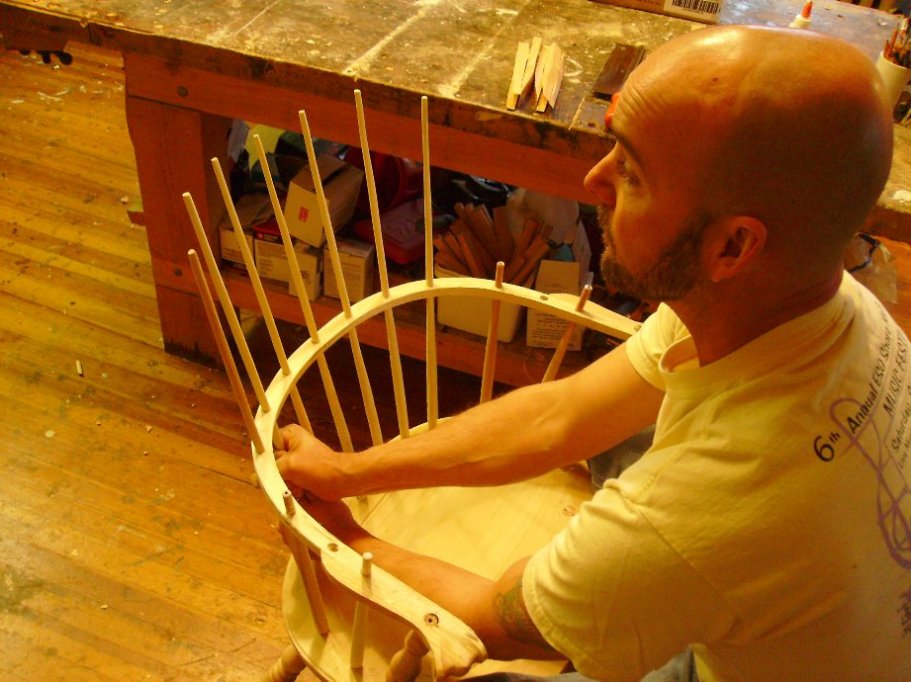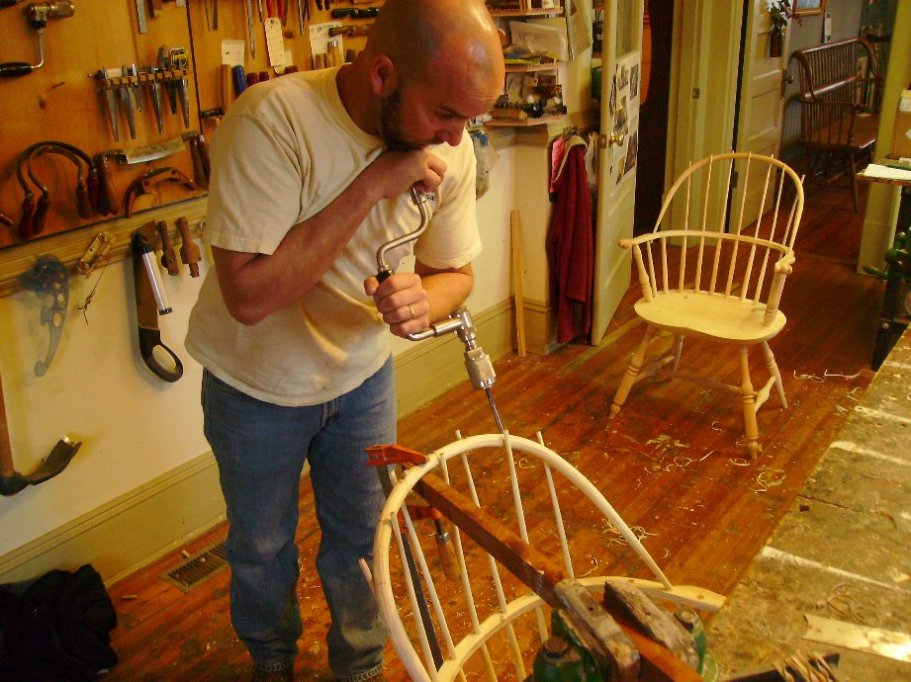|
Duke of Windsor by Bill Glose Originally published in Hampton Roads Magazine
Not only does he have plenty more wood, he doesn't have far to go to get it. The piece he's carving right now came from a red oak in his own yard. Standing on the stoop behind his workshop, he sets a log on the ground and slices it into 16 long strips using an axe. He could be mistaken for a pioneer chopping firewood, except these long strips are destined to become spindles in the back of a handcrafted Windsor chair. He uses a lathe on the legs and the stretchers that go between them, but Lewin carves every other piece of his Windsor chairs using the same tools and techniques as craftsman from Revolutionary times. When Lewin drills holes into the soft wood of the seat, he uses an old-fashioned drill with a hand-cranked arm and a spoon-shaped bit. It looks like he’s performing a lobotomy. Making matters more difficult is the fact that there are no right angles on a Windsor chair. Each hole is oriented in a different direction and turned at a different angle. His workbench, which is dotted with holes from “exuberant drilling,” testifies to the learning curve required to master this technique.
Antique Windsors in good condition can sell for more than $60,000. At a hundredth of that price, you can buy one of Lewin’s replicas at the antique shop he and his wife Sally operate on the Eastern Shore called the Windsor House (lewinwindsorhouse.com). Customers can browse and buy whatever’s on the floor or they can commission Kurt to build furniture to specification. Benches, stools, tables, or even a standard Windsor that better accommodates America’s growing girth. “A lot of people will sit down in one of the chairs and say, ‘I’d like the same chair, just bigger.’” Most days, Kurt is hard at work in the woodworking shop that fills its back room, his not-so-fierce guard dog Winnie, a tiny terrier, curled in a wicker basket beside him. A transplanted New Yorker with a tough-guy accent, a stocky build, and eyes that can determine level at a glance, Kurt appears to have been crafted for this purpose. Calloused hands nicked many times over the years serve as a testament that his skill was not inborn but gained from years of apprenticeship. “Oh, yeah,” he says with an impish grin that makes him look like Andre Agassi, “I’ve cut myself plenty of times.” But not today. Today, the long piece of wood he’s attacking swiftly takes shape,
Once Kurt finishes building the chair, Sally comes in to finish and paint it. Then Kurt starts in on another one. Unless, that is, he’s teaching a class, something he tries to do once a month. “Most people don’t understand what goes into a piece of furniture,” he says. “Steam bending wood, taking straight pieces of wood and bending them into the shapes that you want—they get pretty excited about that. When I give somebody a chunk of what looks like regular old firewood and pass them a hatchet and say, ‘Split the blanks out.’ It’s a fun class.” It’s also five full days of hard work. But at the end, students leave with a Windsor chair that they built. A piece of functional art that their descendants might still be using a hundred years from now. “There’s nothing better,” Kurt adds, “than making something with your own two hands.” |


